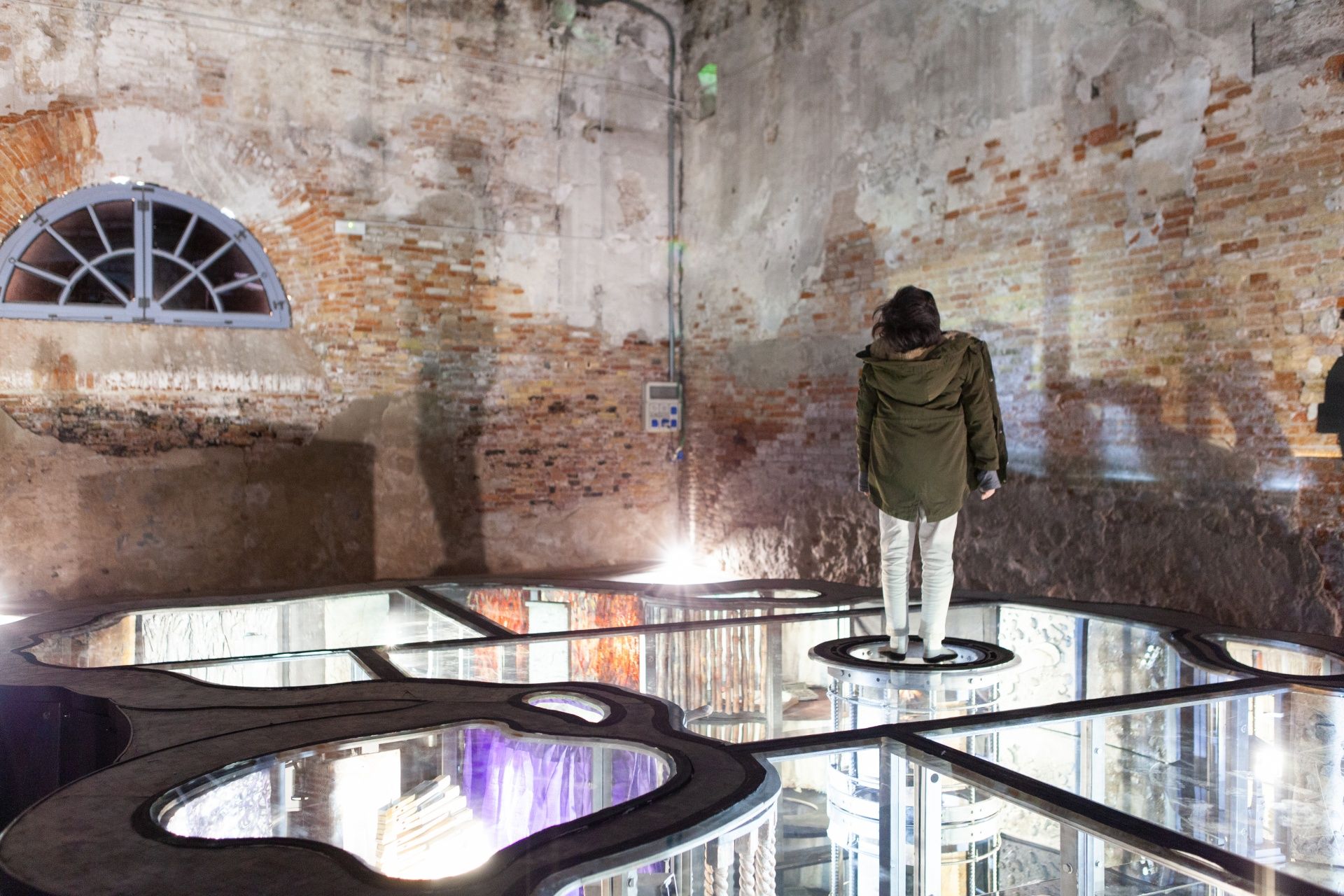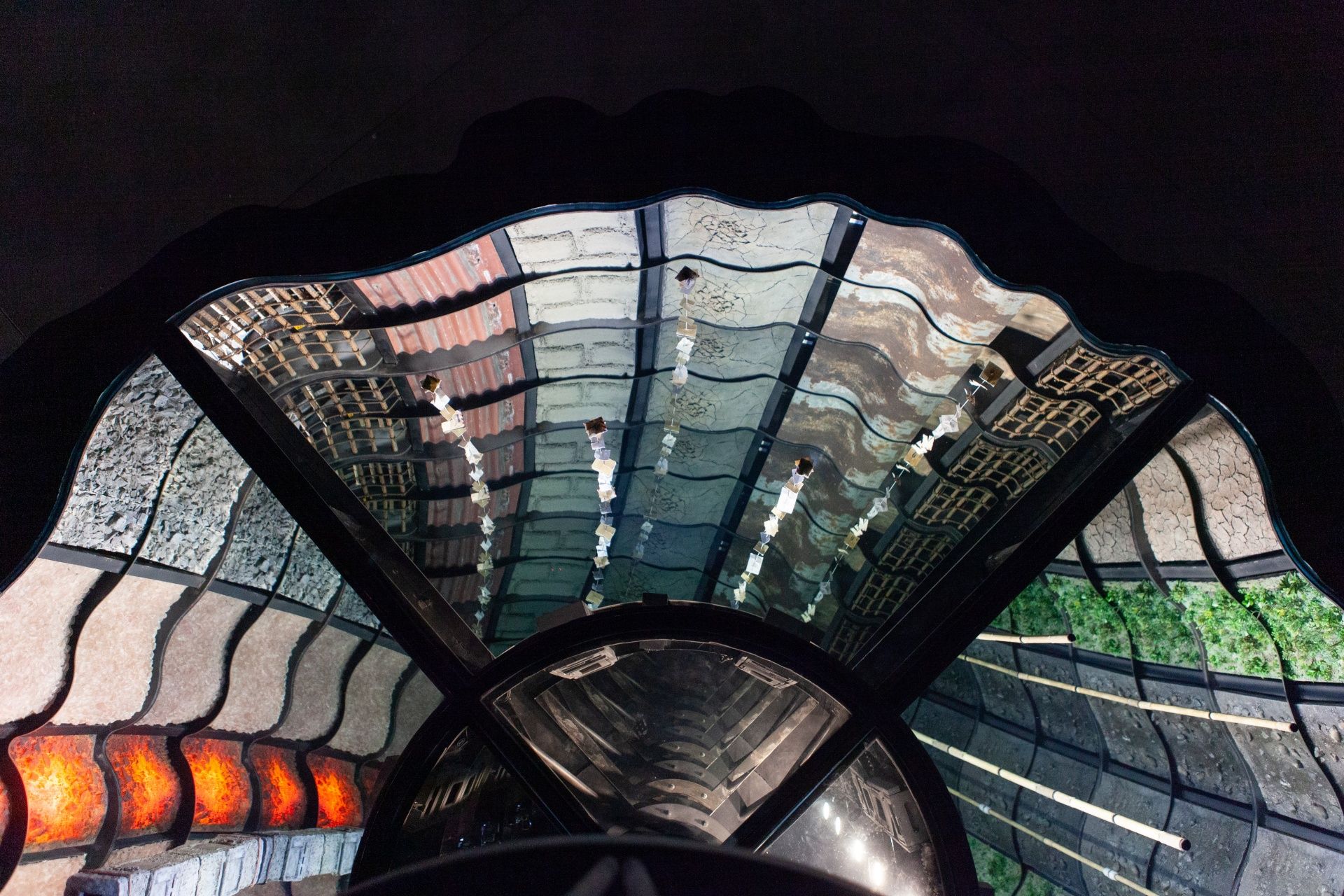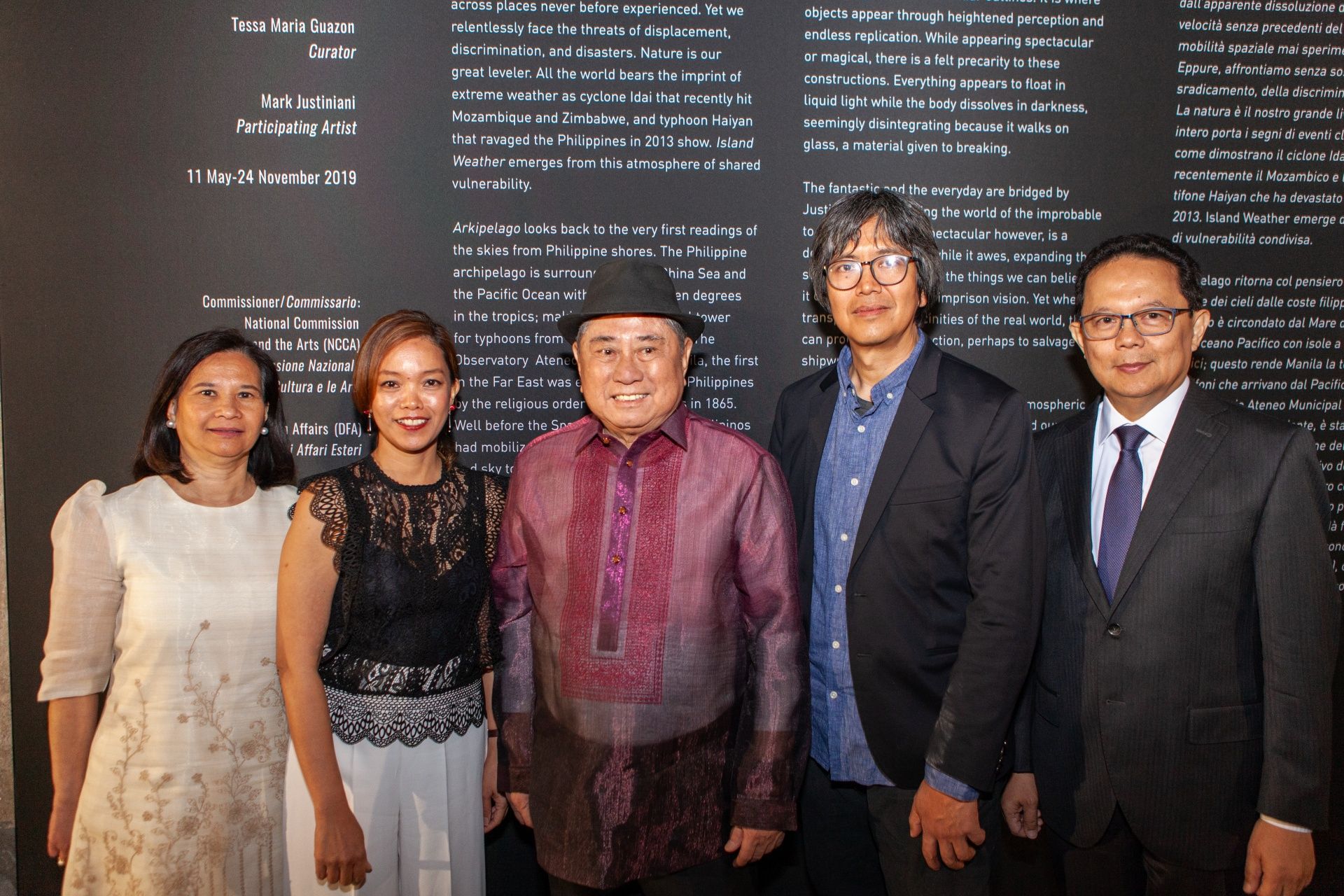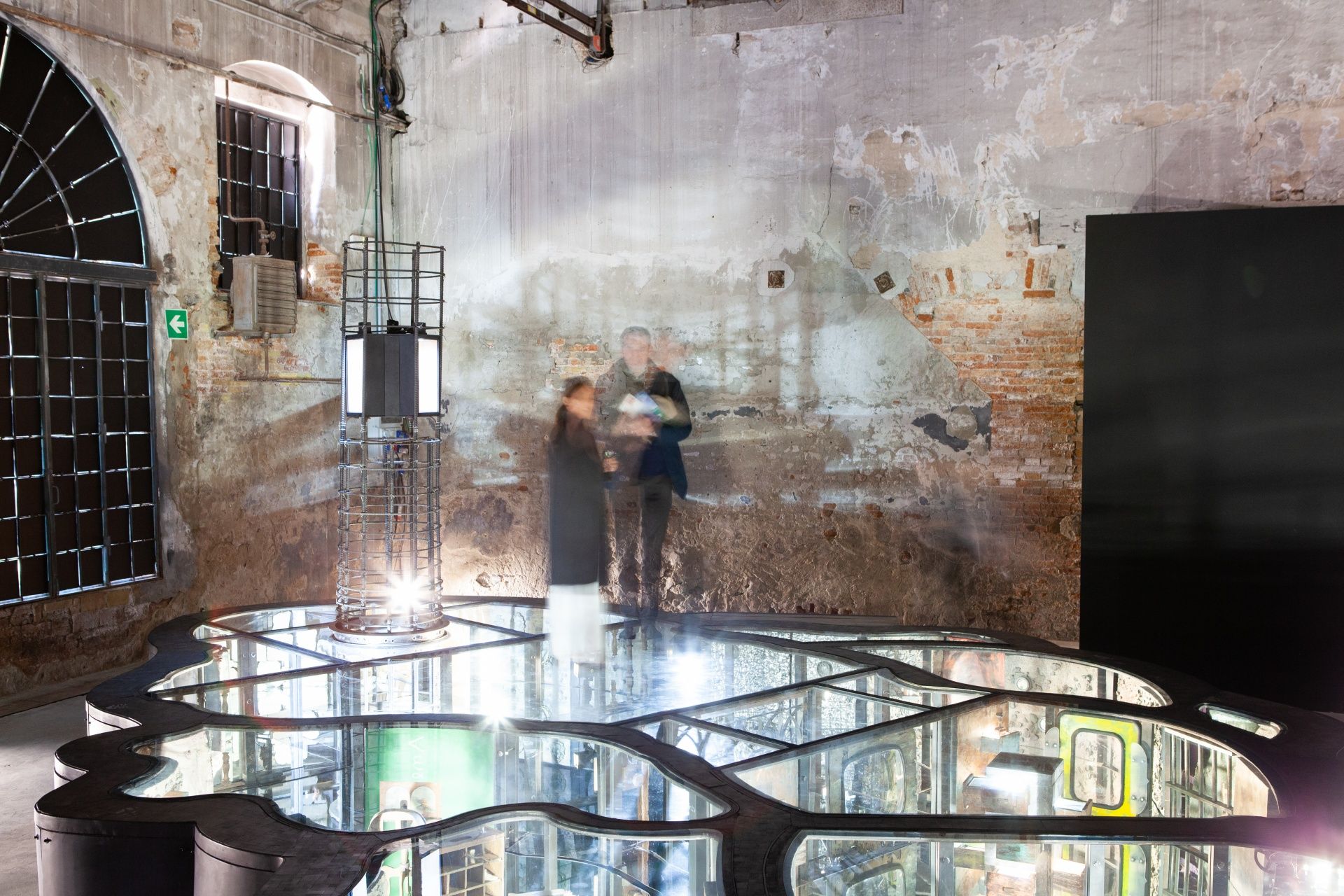Get to know more about the now-iconic installation that graced the 58th Venice Art Biennale:
Jose Tence Ruiz, one of the four artists featured when the Philippines participated again in the Venice Art Biennale after a hiatus of 51 years, stares down through the glass-surfaced installation by Mark Justiniani, the Philippine Pavilion’s lone participating artist in the 2019 rendition of this major international exhibition. “This is strong, very strong,” he murmurs repeatedly.

Justiniani, Bacolod-born artist-activist and magical-realist who works with light and mirrors, created his installation Arkipelago to give a visual context to Tessa Maria Guazon’s winning curatorial thesis, Island Weather. The biennale’s overall curator is the American Ralph Rugoff who chose the theme (which he would rather call “approach”) “May you live in interesting times,” translated whether accurately or not from a Chinese curse that was invoked by a British statesman in a speech delivered decades ago. With this phrase, Rugoff said he wanted the artists to “challenge existing habits of thought” and to provoke questions and discussions. Arkipelago will never disappoint Rugoff. As many as the countless pieces Justiniani has painstakingly placed under the glass of this huge-scale, three-piece installation are the questions each item raises. Electric metres, condiment bottles, a cage and a caged chair— how do they represent the Philippine way of life? In fact, the conversations started even before Venice, in Justiniani’s Parañaque City workshop, among the 100 workers who helped put together this massive immersive piece.







